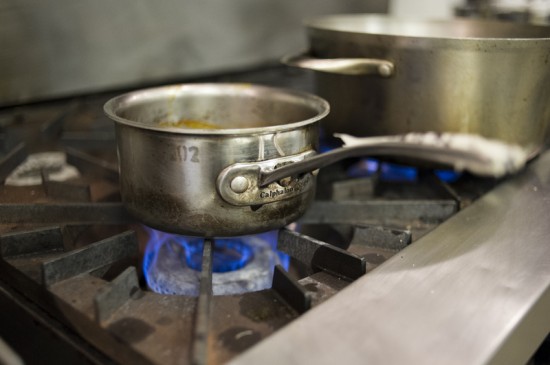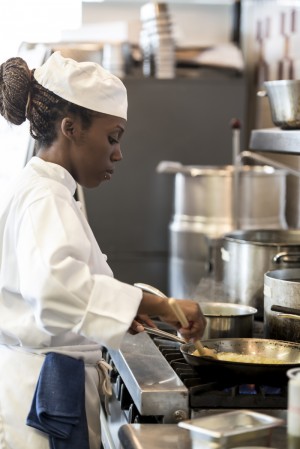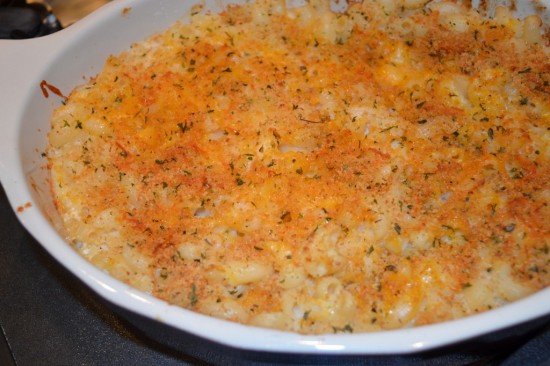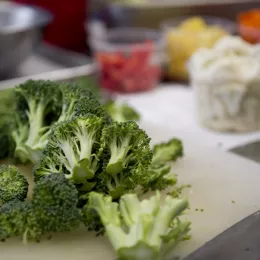The first module in the Culinary Arts program at ICE takes you through all of the basics of vegetable, herb and cheese identification, fabricating meats and seafood, and making stocks. We then moved on to learn the five “mother sauces”; béchamel, velouté, espagnole, hollandaise, and tomato sauce. These five are the basis of all classical sauces and each serves as the head of it’s own family of secondary sauces, which are used in many contemporary cuisines.

Considering a major ingredient in most of these sauces is a “roux” (a thickening agent made from equal parts fat and wheat flour), this gluten-free culinary student found herself in a bit of a pickle! I could have brought in my own flours to work with, but initially, I wanted to learn how the sauces were supposed to look, feel and function. To achieve this, I decided to work with regular flour, sacrificing one of the most important senses for a cook: taste.
 There was not a single thing I could taste before presenting my final product to our Chef Instructor to decide how well I executed the recipe. Can you imagine? We are trained to taste everything, to determine how it is seasoned and when it is ready. I was presenting sauces for judgment and approval without any sense of their flavor. I had to rely on my general sense of seasoning proportions and ask my fellow students to give me their opinions.
There was not a single thing I could taste before presenting my final product to our Chef Instructor to decide how well I executed the recipe. Can you imagine? We are trained to taste everything, to determine how it is seasoned and when it is ready. I was presenting sauces for judgment and approval without any sense of their flavor. I had to rely on my general sense of seasoning proportions and ask my fellow students to give me their opinions.
For one out of the four sauces I made, another student said I should add more salt. Other than that, I actually didn't adjust any of them—yet, Chef Sam approved of all of them. Yes! I did it! Although, I still have no idea how they tasted and am not exactly sure how I did relative to my own palette. Isn't that crazy?
Since then, I’ve experimented a bit. I’ve learned some gluten-free flour blends don’t work well for roux, while others, initially, seem like they do not thicken enough, but then thicken a lot more after sitting for a bit.
Through trial and error I’ve been able to make some great sauces using gluten-free roux or thickening slurries (made of equal parts of cornstarch or arrowroot and liquid). I even made this delicious gluten-free macaroni and cheese using béchamel as the base and turning it into a mornay sauce.

My fellow classmates were a tremendous help in terms of understanding how my sauces tasted and compared with the traditional recipes. Through my gluten-free experiments, they have since learned of allergy-friendly substitutions they can use for their future customers. With the prevalence of celiac disease and gluten intolerance on the rise, it's this kind of collaborative learning that helps us all move forward and become stronger chefs.
Jackie Ourman is a current ICE Culinary Arts student, food lover and mom of three managing celiac disease and multiple food allergies. For more of her delicious gluten-free and allergy-friendly recipes, visit her blog, Celiac and Allergy Friendly Epicurean (C.A.F.E). You can also find her on Twitter, Facebook, Instagram and Pinterest.



